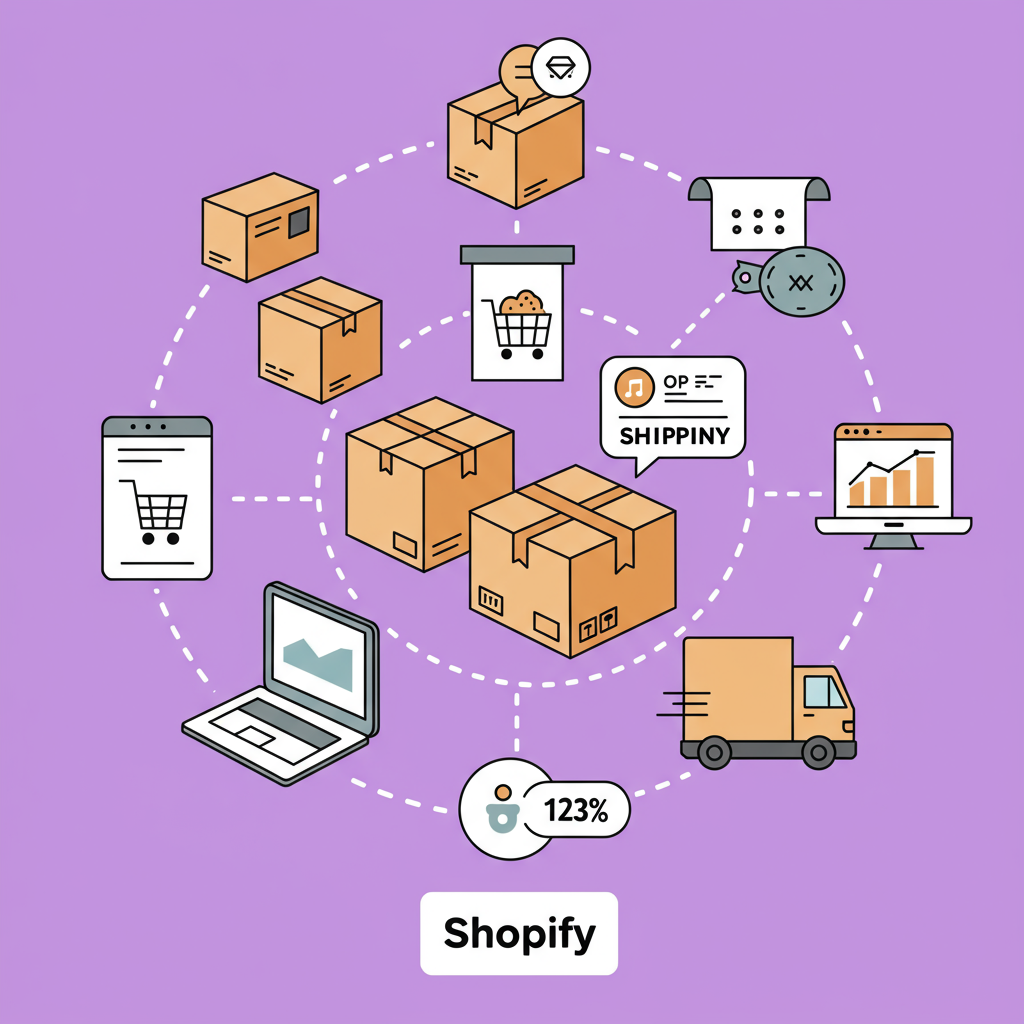Streamline Your Operations, Boost Efficiency, and Scale Your E-commerce Business
Hello fellow Shopify merchants! Today, I want to talk about something that can truly transform your e-commerce business: automating fulfillment.
As your store grows, manually handling every order, from picking and packing to shipping and tracking, quickly becomes a bottleneck.
It consumes valuable time, increases the risk of errors, and can significantly slow down your growth.
That’s where automation steps in, offering a powerful solution to streamline your operations and free you up to focus on what you do best – growing your brand.
So, why should you even consider automating your fulfillment process? The benefits are numerous and impactful.
Firstly, it dramatically increases efficiency. Tasks that once took hours can be completed in minutes, or even seconds, without human intervention.
Secondly, automation reduces human error. Fewer manual touchpoints mean fewer mistakes in order processing, inventory counts, and shipping details.
Thirdly, it saves you money in the long run. While there might be an initial investment, the reduction in labor costs and error-related expenses quickly pays off.
Fourthly, it improves customer satisfaction. Faster, more accurate fulfillment leads to happier customers who receive their orders promptly and correctly.
Finally, automation provides scalability. As your order volume increases, your automated system can handle the growth without requiring a proportional increase in manual effort.
Fulfillment isn’t just about shipping; it’s a multi-faceted process. Let’s break down the key areas where you can implement automation.
**Order Processing:** This is the initial step. Automation here means orders are automatically marked as paid, inventory is updated, and shipping labels are generated.
**Inventory Management:** Keeping track of stock levels is crucial. Automated systems can update inventory in real-time, trigger reorder alerts, and even manage multiple warehouse locations.
**Shipping & Label Generation:** This is perhaps the most obvious area. Automated systems can select the best shipping rate, print labels, and even schedule pickups.
**Customer Communication:** From order confirmation to shipping updates and delivery notifications, automated emails or SMS messages keep your customers informed every step of the way.
**Returns Management:** While often overlooked, automating parts of the returns process, like generating return labels or initiating refunds, can significantly improve post-purchase experience.
Now, how do we actually achieve this automation within Shopify? You have several powerful options at your disposal.
**Shopify’s Built-in Features:** Shopify itself offers some fantastic native automation. For instance, you can set up automatic fulfillment for digital products or specific shipping profiles.
**Shopify Apps:** The Shopify App Store is a treasure trove of solutions. Apps like ShipStation, ShippingEasy, or Order Printer Pro can handle everything from label generation to complex shipping rules.
**Third-Party Logistics (3PLs):** For many growing businesses, partnering with a 3PL is the ultimate automation solution. They handle storage, picking, packing, and shipping entirely.
**Integration Platforms (e.g., Zapier):** For more complex, custom workflows, tools like Zapier can connect Shopify with other services (like accounting software or CRM) to automate data transfer.
Before diving in, take some time to plan. What are your biggest pain points? What processes consume the most time?
Start small. You don’t have to automate everything at once. Pick one or two critical areas and implement solutions there first.
Research thoroughly. Compare different apps and 3PLs. Read reviews, check pricing, and ensure they integrate seamlessly with your Shopify store.
Test everything. Before going live with any automation, run test orders to ensure everything is working as expected, from order placement to delivery notification.
Define your rules. Automation relies on clear rules. For example, “if order value is over $X, use express shipping” or “if product is Y, fulfill from warehouse Z.”
What do you think about this article so far? Is it helping you envision a more streamlined fulfillment process for your Shopify store?
Even with automation, continuous monitoring is key. Systems can break, or rules might need adjusting as your business evolves.
Don’t forget about customer service. While automation handles the routine, be ready to step in for unique customer requests or issues.
Data security is paramount. Ensure any third-party apps or services you use comply with data protection regulations.
Be prepared for a learning curve. Implementing new systems takes time and effort, but the long-term benefits far outweigh the initial investment.
Regularly review your processes. As your business scales, what worked yesterday might not be the most efficient solution tomorrow.
Automating fulfillment in Shopify isn’t just about making things easier; it’s about building a more resilient, scalable, and profitable e-commerce business.
By embracing these tools and strategies, you can reclaim your time, reduce errors, delight your customers, and ultimately, achieve greater success.
I encourage you to explore the options available and take the first step towards a more automated, stress-free fulfillment future. Your business (and your sanity) will thank you for it!






